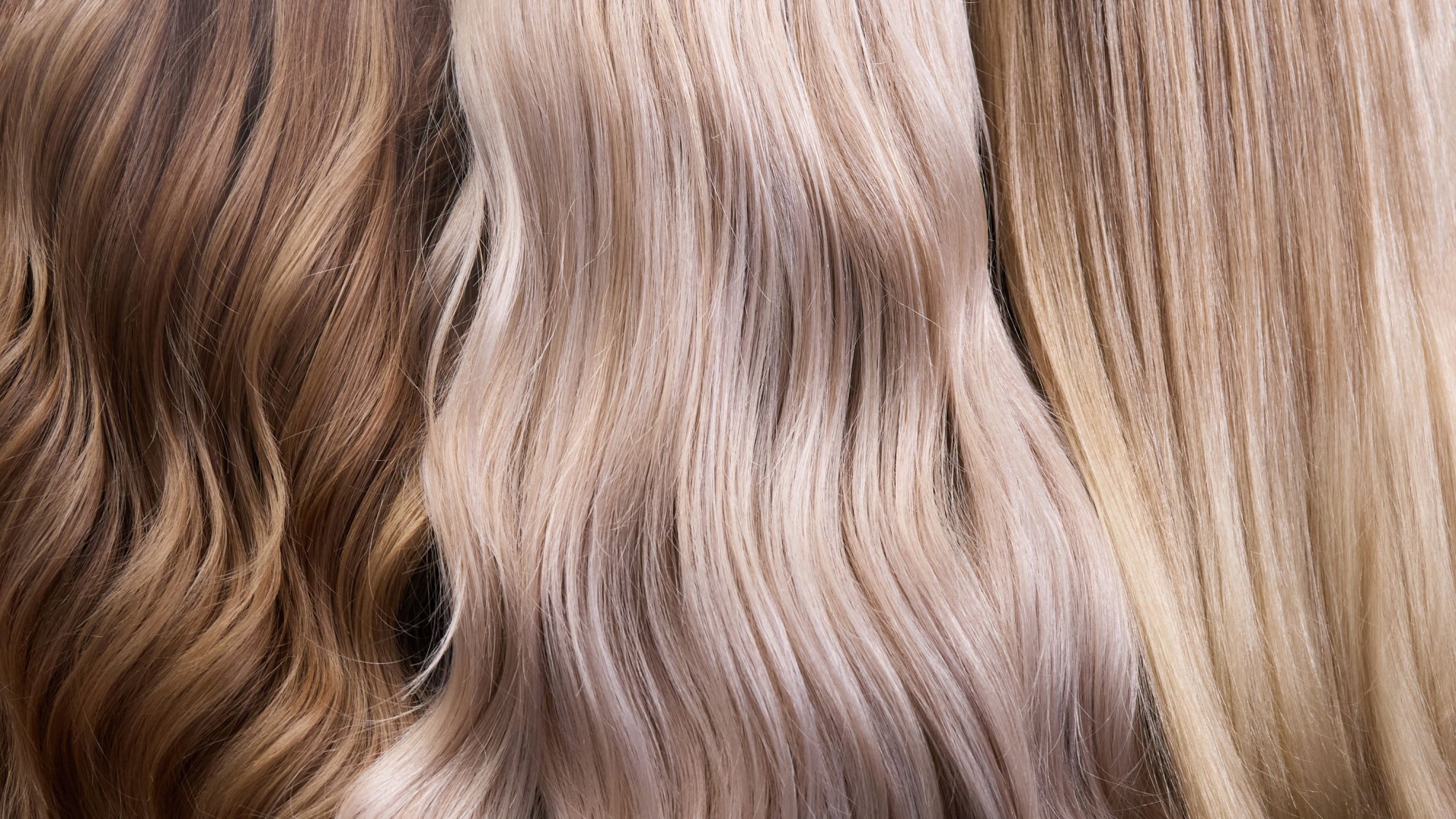- Blog
- Hair Products
- How to Use Purple Shampoo on Blonde Hair
HOW TO USE PURPLE SHAMPOO ON BLONDE HAIR
Blonde hair can sometimes look yellow, dull or brassy, with reddy, chestnut tones that can make your colour look tired.
If you haven’t visited the salon for a while and your hair’s started to show unflattering orangey tones, here’s how to get back to your brightest, ashy best.
What is purple shampoo?
Purple shampoo is a richly-pigmented shampoo. It’s designed for natural blonde and bleached hair and cools your hair’s tone, neutralising any brassiness and keeping your blonde looking ashy. Silver shampoo works in a similar way to remove yellow and tawny brassiness from grey hair.How does purple shampoo work?
To explain exactly how purple shampoo works, we’re going to get a little technical.In colour theory, purple is opposite light orange and yellow on the complementary colour wheel, and the purple pigment in purple shampoo balances out brassy colours. The purple pigment acts as a toner that helps to reduce yellow and orange hues and transform your hair into cool, hydrated blonde.
Your hair stylist applies a professional toner when you get your hair coloured, but it can often fade quite quickly, which is why you may need an at-home hair toning solution.

How to use purple shampoo
- Start with wet hair that’s been squeezed slightly, so it’s 80% damp but not sopping wet
- Add a palmful of purple shampoo into your hands
- Run the shampoo through your hair from your roots to your tips, lathering as you go
- If you need to, focus on areas of stubborn brassiness to knock our orange and brassy yellow tones
- f you’re using our Violet Crush purple shampoo, leave the shampoo suds in your hair for 1 minute
- If you’re using our Violet Crush Intensive Purple Shampoo, you can minimise stubborn brassiness by leaving the shampoo in your hair for 2-3 minutes
- Rinse thoroughly and finish with our Violet Crush Purple Conditioner, or our Violet Crush Purple Toning Mask

How long should I leave purple shampoo on my hair?
If you’re not using a John Frieda product, we’d advise you thoroughly read the shampoo’s instructions. Different formulas vary, and can range from rinsing immediately to leaving on for 5 minutes or longer to get the best results.Can I use purple shampoo on dry hair?
We’d advise you not to; purple shampoo should always be used on wet hair to ensure that it’s absorbed evenly and get the most out of your shampoo’s toning qualities. Using purple shampoo on wet hair also helps you avoid patchy spots of brassiness, which can become noticeable if you haven’t toned your hair evenly.How often should I use purple shampoo?
How often you use purple shampoo completely depends on your hair type and current shade, so we recommend taking a good long look at your locks before use.Our Violet Crush Purple Shampoo is suitable for everyday use to keep your blonde from turning brassy. This is the best purple shampoo for neutralising brassy tones without over-toning, so if you’ve never used purple shampoo before, this is a great place to start.
Our Intensive Purple Shampoo is made with ultra-pigmented intensive purple shampoo to transform even the most stubborn brassy tones into cooler, brighter blonde. We recommend using weekly or as needed to reach your desired level of cool tones. It contains both violet and blue pigments and tackles both yellow and copper tones for a powerful neutralising effect; pair this shampoo with our purple conditioner, and you’re onto a winning combination.

What happens if I overuse purple shampoo?
If you repeatedly use purple shampoo, have damaged or porous hair or leave purple shampoo on your hair for an extended period of time, temporary ashy or purple tones may be visible after use. To remove them, simply wash your hair with a clarifying shampoo. If necessary, repeat until any unwanted colour is removed from your hair.Will purple shampoo dye my hair?
Purple shampoo will not dye your hair, but if you leave it on for too long you could find yourself with a little lilac staining. It’s easy enough to get rid of - just wash your hair with a clarifying shampoo to reduce the tint.Will purple shampoo lighten my hair?
No - purple shampoo doesn’t lighten hair. It just brightens brassy blonde by cancelling out yellow and orange tones.
When should you not use purple shampoo?
If you have dry hair, we’d recommend that you use our Violet Crush Purple Toning Mask - it knocks out stubborn brassiness but also intensely nourishes your hair while it’s toning it.If you don’t notice any improvement in your brassiness after two weeks of using a purple shampoo, we’d advise that you visit your stylist - they’ll be able to help you lift away any stubborn brassiness that remains.
Can I use purple shampoo on brown hair?
You can - but for best results, we’d advise using a blue shampoo to minimise brassiness in brunette hair.Brassiness in brown hair tends to look darker, with deeper red, orange and tawny tones, and as blue is opposite orange on the colour wheel, it’s the perfect pigment to banish brass.
- Blog
- Hair Products
- How to Use Purple Shampoo on Blonde Hair




